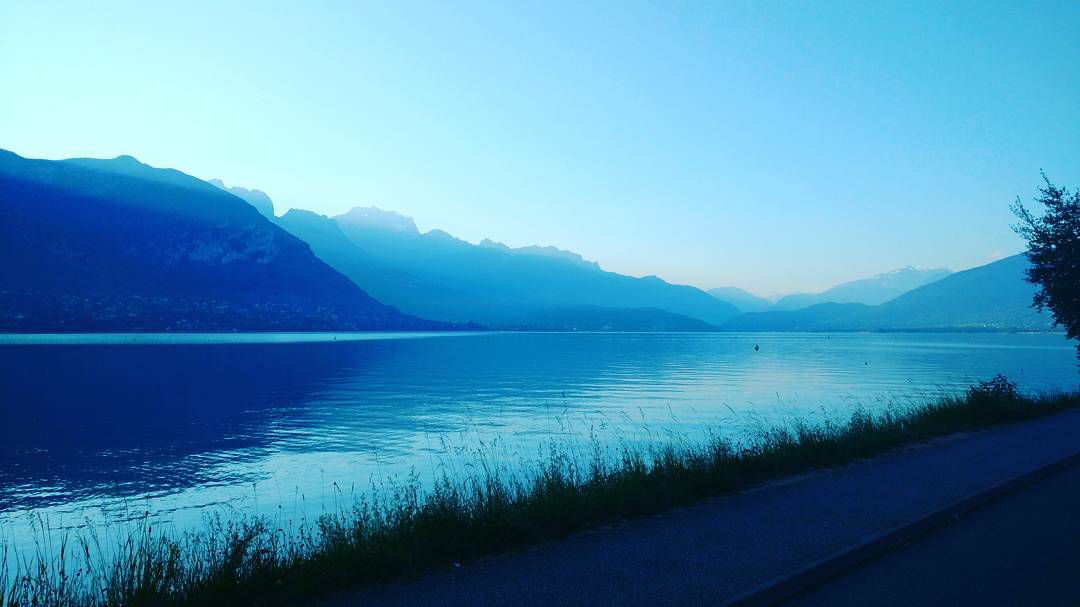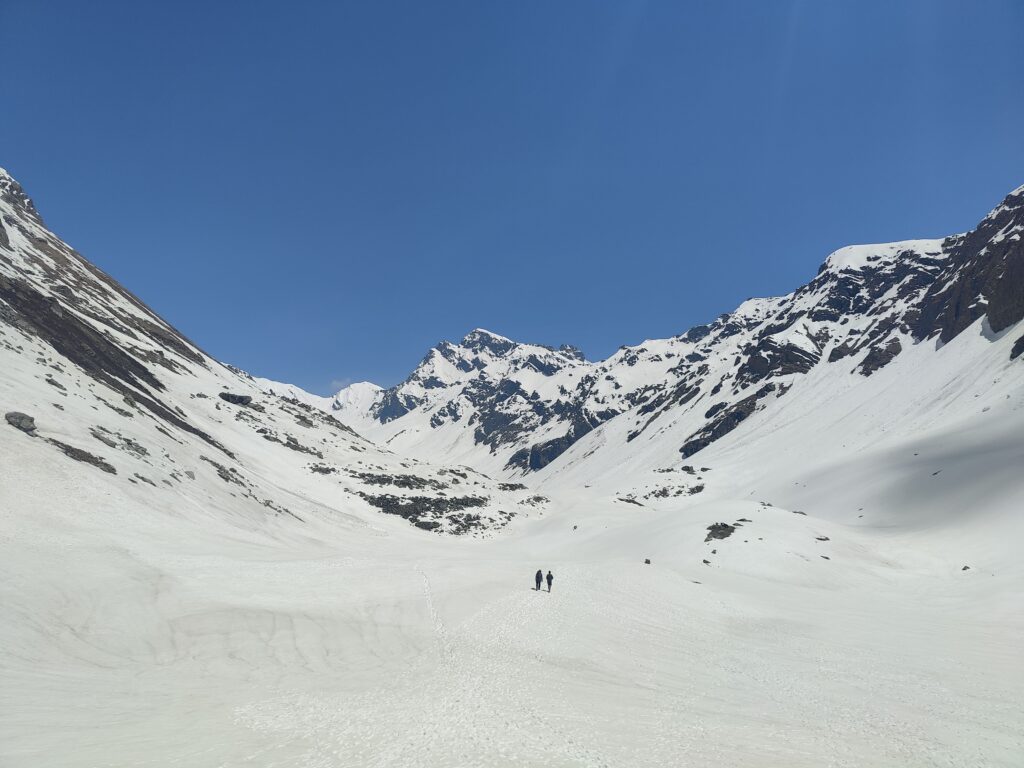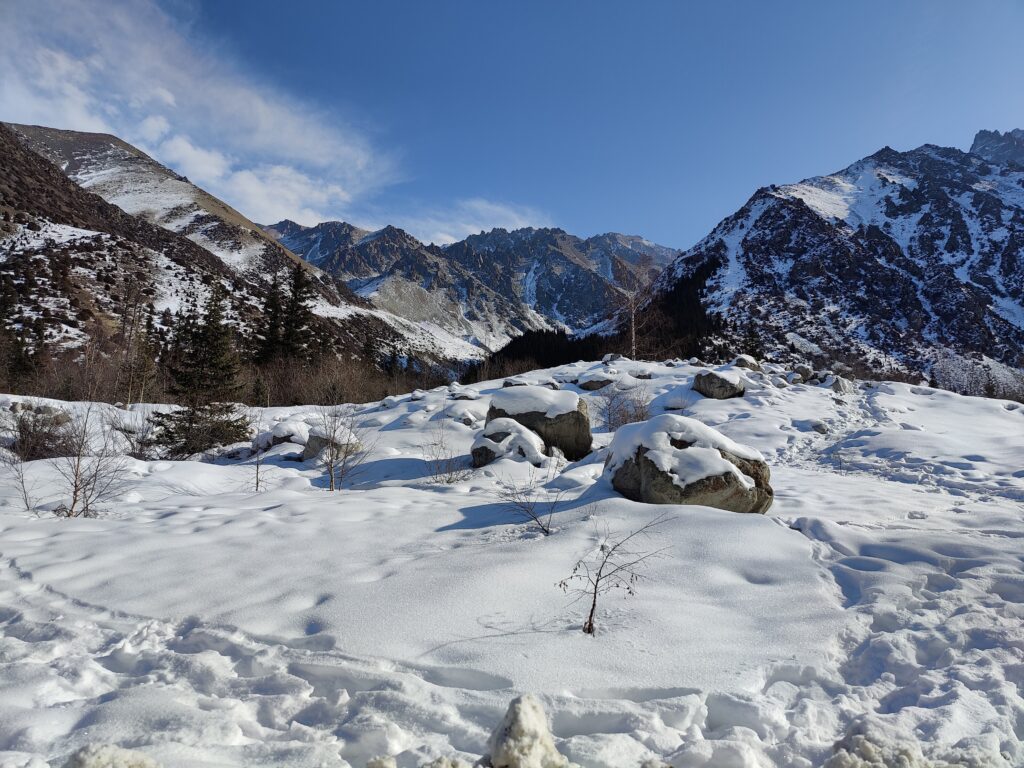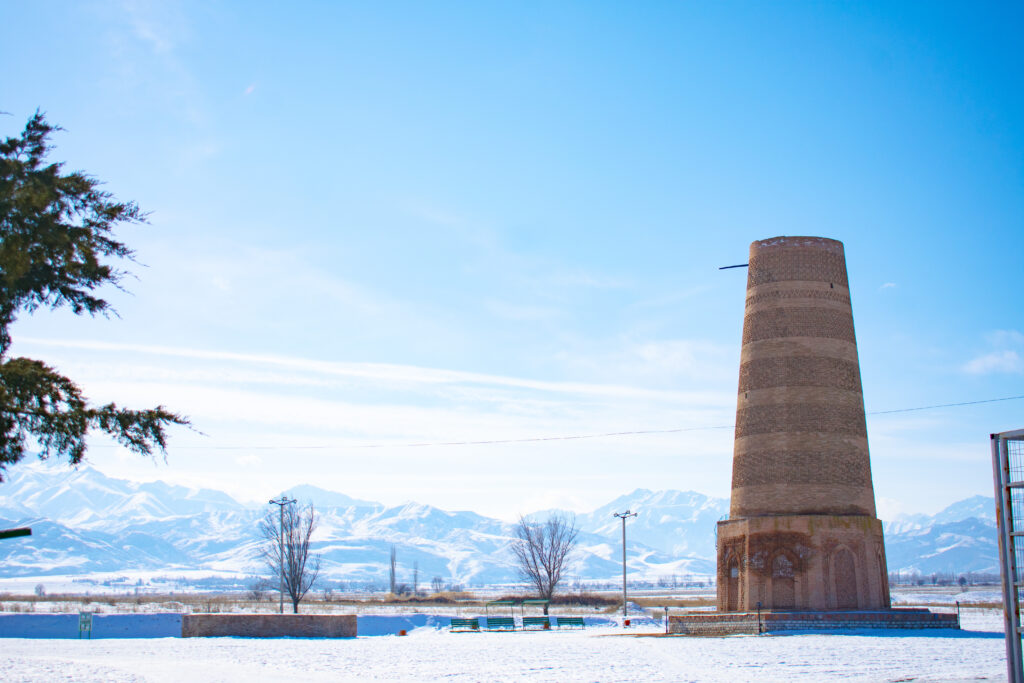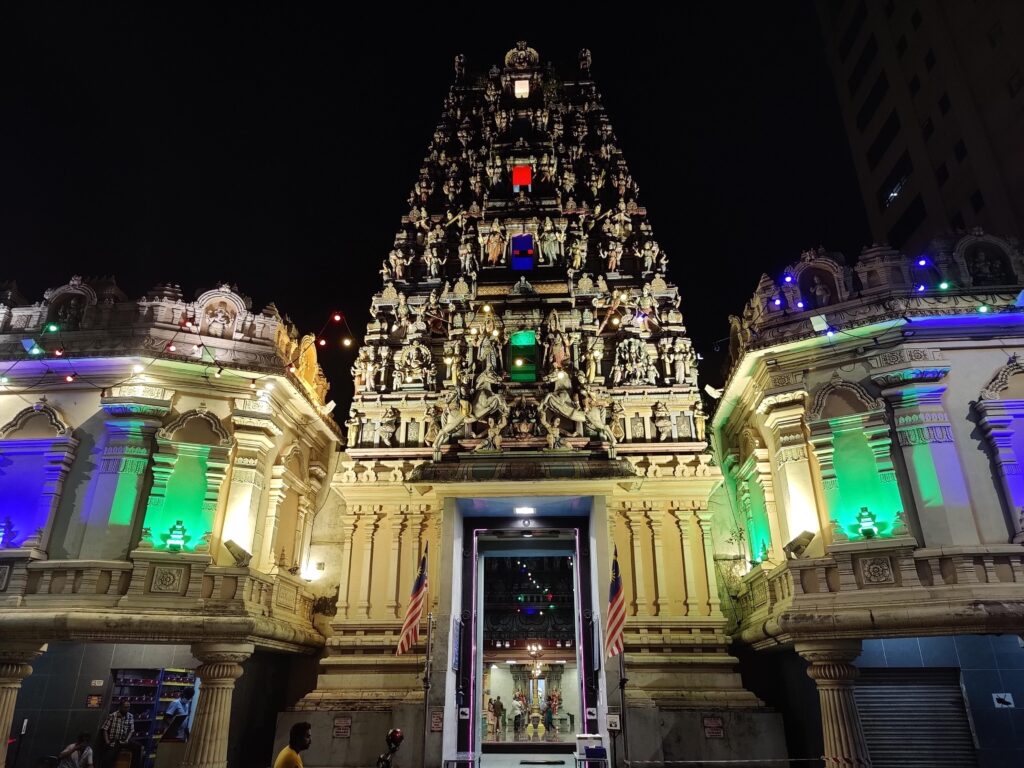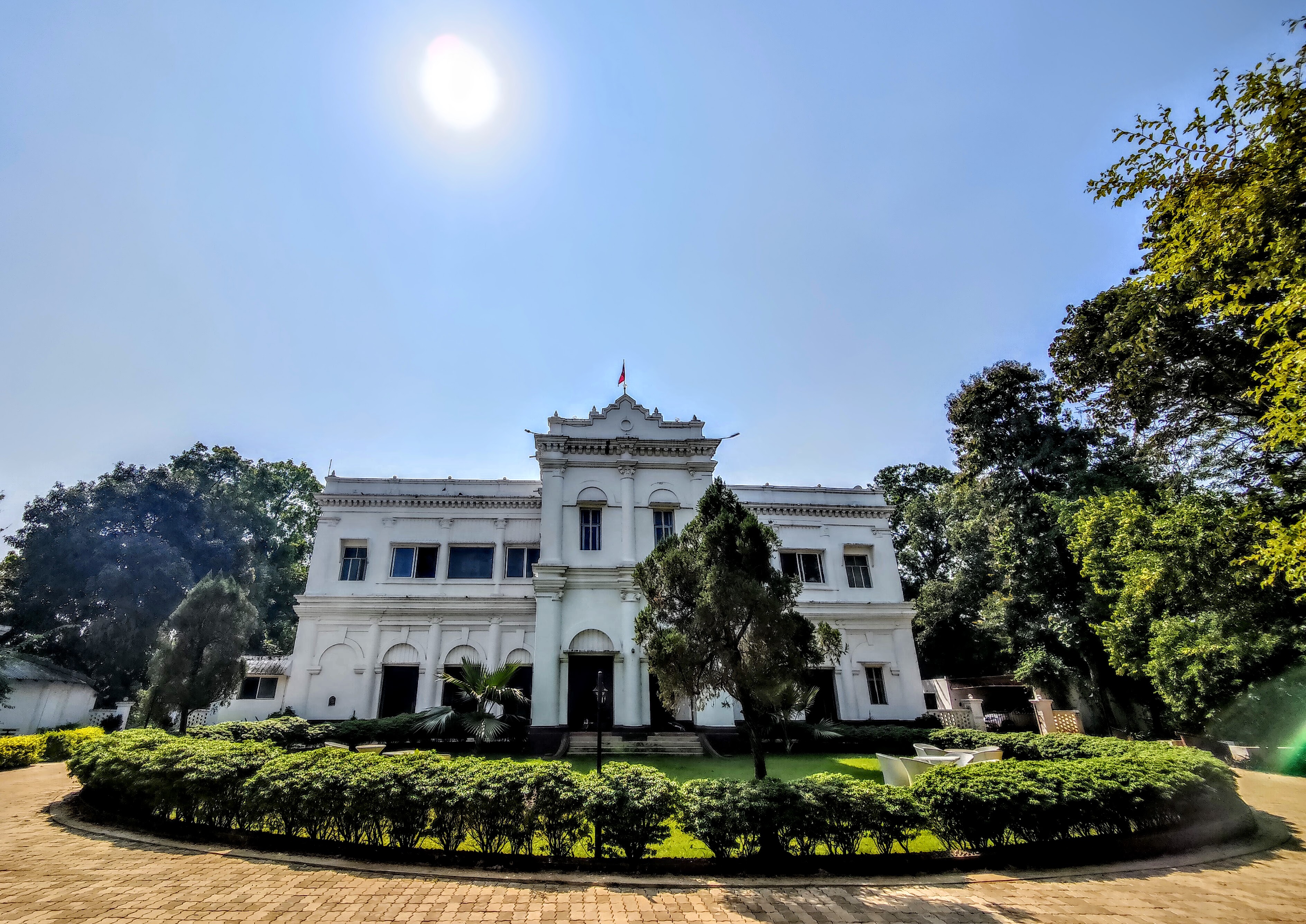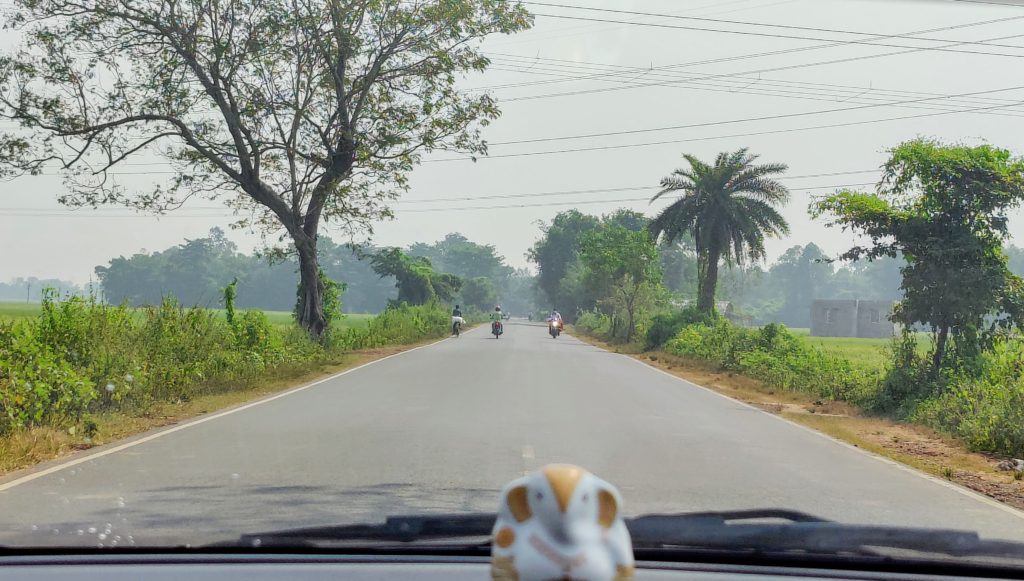
There’s a joke among climbers in this part of the world. A Nepali’s idea of “flat” is a little up and a little down. It’s not a joke. It’s the cold truth.
There are no easy days on this trek. This is big-mountain country and the steep ascents and descents never let you forget that. No leisurely strolls through meadows here. There are only two kinds of terrain on the trail – steep and very steep.
Over 8 days, we ascended from an elevation of approximately 9000 feet to over 18000 feet and then all the way back down again over the next 3 days. It tested both my physical and mental fortitude to their limits.
But all tiredness disappeared when, on Day 9, I stepped out at 3:30 am from our tea house at Gorakshep and saw the snow-capped mountains all around me shimmering in the glow of the near-full moon. Surreal.

The temperature was a bone-chilling -15 °C. After a 2.5-hour long, steep climb I was on top of Kala Pathar. It is the peak that offers the best views of Mount Everest. The spectacular panoramic view has not just Mount Everest in it but Nuptse and Lhotse as well.
At more than 18000 feet, Kala Pathar is the highest altitude I have ever attained. Just as the first rays of the sun began to bathe the peaks in a yellow glow, the still-bright moon started going down behind the peaks. At that moment, the grind of the last eight days felt completely worthwhile. I counted my blessings.
Ever since I started trekking, a trek to the Everest Base Camp has been on my bucket list. My resolve strengthened when I saw the movie Everest. To attempt the summit, I will have to wait for the next lifetime. A pilgrimage to the Base Camp would do for now. Hikers come here from all corners of the world, from Canada to Australia. Being right next door in India and not going would be a sin.
I had booked my trek through Bikat Adventures. The 12-day trip ex-Kathmandu cost around INR 60,000 excluding food. The return flight to Kathmandu was approximately INR 30,000 and food on the trek cost around INR 35000. Including miscellaneous expenses, one can budget approximately INR 150,000 for the trip. Our group had only three hikers and was accompanied by a guide and a porter.
Day 0 – Kathmandu

I had a spare day in Kathmandu which I used for a spot of sightseeing. Boudhanath is a giant, whitewashed stupa with a glistening golden crest painted with the eerie-looking Boudha eyes. It is beautifully adorned with colourful Tibetan prayer flags. It’s one of the most important Buddhist shrines in Nepal. The stupa is surrounded by a circular gallery with some very atmospheric cafes and beautiful stores selling exquisite Tibetan handicrafts. I enjoyed lunch at one of the many rooftop cafes with a glass of chilled Coke and arguably the best views in town.
In the evenings, Thamel is the place to be in. This neighbourhood in downtown Kathmandu is backpacker central. Trekkers and tourists from all over the world congregate here. It is packed with affordable accommodation, cafes and pubs serving all manner of global cuisine, trekking gear stores and handicraft shops. The bustle around the place has to be felt to be believed. It really comes alive in the evenings, with the music overflowing into the streets from its many excellent pubs.
Day 1 – Kathmandu to Lukla by flight and onwards to Phakding
The trip got underway with a flight to Lukla. Lukla Airport consistently features in the list of the most dangerous airports in the world. The tiny airstrip is only half a kilometre long and has a steep gradient. Our landing was uneventful (thankfully) but looking at the airstrip does induce a generous dose of trepidation. The 20-minute flight through the Himalayan foothills almost skirts the hills at times. With an outstretched hand, you may be able to touch the huts on the hills. Okay, I am exaggerating. But only a little.

At Lukla we met our guide, Chandra, and porter, Mahesh, had some tea and set off right away. The first day starts with a comfortable descent from Lukla to Phakding. The route passes through postcard-pretty villages and is dotted with teahouses every few metres.
These tea houses are the lifelines of treks in Nepal. They provide frugal but cosy accommodation and simple but fresh, hot meals. The dining halls here are the centre of all activity where trekkers gather after the day’s toil to unwind, sip some hot ginger lemon or chilled beer, play cards and chat. Owing to a long tradition of hikers from the West coming in large numbers, one will find Pizzas, Pastas, Noodles and Pancakes on the menu, apart from the local staple Dal – Bhat.

Day 2 – Phakding to Namche Bazar
The steepness of these slopes hits home today. It’s a long day’s walk to Namche. With every zig-zag turn, I prayed for a small flat stretch to catch my breath back. But the slopes are relentless. The scenery though was breathtaking. Most of the day’s trek is through a forest and multiple times during the day, we crossed the famous suspension bridges across the Dudh Kosi river. The Dudh Kosi is aptly named. The rapidly gushing water appears as white as a stream of milk. Crossing these suspension bridges, also used by yaks and mules, is a mini adventure in itself, especially when strong winds rock them vigorously.

We entered Namche Bazar at dusk and immediately fell in love with this postcard-pretty town. Namche is the capital of the Khumbu region, the region in which Mount Everest is situated. Namche is a weird, out-of-step place on the otherwise spartan trail. It has cafes serving Salmon Sushi, Live Music bars and North Face stores. It’s a good place to stock up on any provisions one may need because supplies get scarce and scarily expensive beyond this point.
Day 3 – Acclimatization at Namche Bazar
My idea of acclimatisation is a lazy day spent in bed with a book and some hot beverages. Our guide, Chandra, thought differently.

Starting from Namche Bazar, we hiked up more than 1500 feet to the Everest View Hotel. The views from the hotel are spectacular. While Everest bestows the region with its fame, several other peaks in the region are strikingly beautiful. Ama Dablam, meaning “mother’s necklace’, a 20,000-foot-high peak that we encountered often on the trail, just mesmerised me.

Near Namche Bazar is the Sherpa museum which does a fantastic job of documenting all facets of Sherpa life. It traces the history of the region from ancient to modern life, gives numerous glimpses of the colourful sherpa culture and documents the mountaineering feats in the region meticulously. It is an absolute must-visit for anyone wanting to understand this mysterious region.
Day 4 – Namche to Tengboche
Another day of gorgeous mountain views. Another day of back-breaking climbing.

The unexpected highlight of the day was a bakery next to Tengboche Monastery. After days of eating the bland food at tea houses (the diminished sense of taste at high altitude was more to blame than the food itself TBH), this was a carnival for my tastebuds. The quality of their cakes was exceptional and a bakery like this won’t be out of place in Paris or Stockholm. Their cakes can do as much good for the soul as prayers at the monastery next door can.
Coming to the monastery itself. The Tengboche Monastery is a 100-year-old gompa that is not only sacred to the Buddhist faithful but also to mountaineers who wish to summit Everest. They make it a point to seek blessings here before proceeding onward. Listening to the monks chanting in the chorus was deeply moving.
The teahouses in Tengboche were all full so proceeded to the next village enroute, Debuche to stay the night. If you are beginning to spot an obsession with names ending in “che”, well, “che” apparently means “ a place that the guru’s feet have trodden”. The stretch from Tengboche to Debuche passes through a beautiful Rhododendron forest. Though the flowers were not in bloom, this stretch still was among the prettiest we encountered in the entire trek.

Day 5 – Tengboche to Dingboche
Today we left the greenery behind and climbed above the treeline. After this, the scenery would get increasingly stark. We passed through pretty little villages, Pangboche and Shomore on the way.


While I was lucky to evade altitude sickness ( a fairly common occurrence) on the trek, there was no escaping homesickness. We weren’t halfway through yet. The most testing slopes were still ahead of us. The temperatures and oxygen levels would keep on dropping sharply. My taste buds were betraying me and all food was tasting bland. The prospect of enduring this for another week, without any friends for company, was weighing me down. I was beginning to feel that I had bitten off more than I could chew.

Day 6 – Acclimatization
One more acclimatisation day. But Chandra’s got no chill!


We hiked up to a viewpoint and I must confess, the views made the climb well worth the effort. Once back, I spent the rest of the day catching up on sleep and some light reading.
Day 7 – Dingboche to Lobuche
Once again, today’s highlight was gastronomical. For lunch, I feasted on Indian-style Puri-Tarkari at a teahouse in Thukla. Soul food. No disrespect to the Daal-Bhaat or Pastas, but Puri is love. As more Indian trekkers start frequenting this region, a trend that has picked up after the pandemic, I hope some Indian food will also make its way to the menus here.

The landscape continued to be starkly beautiful. The weather was bright and sunny and I have never seen bluer skies. The anticipation of nearing the Base Camp also buoyed my spirits and today’s climb, despite the challenging terrain, felt a lot more relaxed.
Day 8 – Lobuche to Gorakshep & Everest Base Camp
Today was the big day. We started early in the morning and reached Gorakshep around 11 am.

Gorakshep, situated at nearly 17000 feet, is the highest settlement on the trek. It is a tiny patch of flat land surrounded by steep mountains on all sides. It has no source of water. The water here is airlifted through choppers. No wonder a bottle of water that costs NRS 30 in Kathmandu costs NRS 500 here.
After a quick lunch, we headed off towards the Base Camp around 1 pm. The climb towards the Base Camp is along the famous Khumbu Glacier. The landscapes were nothing like anything I had seen before. The glacier looks beautiful and ominous at once.

The base camp itself is somewhat anticlimactic. It’s merely a relatively flat stretch of snow-free land covered in rocks and pebbles, the last such stretch before the glacier and ice fall. Its symbolic significance cannot be overstated, but it isn’t the prettiest sight you will see on the trek. The Everest peak itself is quite distant and hardly looks imposing from here. Add to that about 500 people jostling for the perfect photo at the same spot.

Nevertheless, the feeling of making it to this spot is indescribable. Legendary mountaineers who submitted Mount Everest would have all started their climb from here. I was standing at a spot with unparalleled significance in the world of mountaineering and I could not be more grateful.
We slept early once we got back because we would leave for Kala Paththar in the dead of the night. Kala Paththar is, both figuratively and quite literally the high point of the trip.
Days 9-11 – The descent!
After summiting Kala Pathar early on the morning of Day 9, we came back for a hearty, well-earned breakfast. And then we started the descent. On Day 9 we slept in Pangboche and the next night at Namche. By the evening of Day 11, I was back in Lukla.
During the three days of descent, I felt truly relaxed to enjoy the breathtaking scenery. Freed from the tyranny of ascent, I paused now and then to gawk at the majestic mountains.

I was also fortunate to spot some rare Himalayan wildlife, a Musk Deer (which sprinted past me too quickly to be photographed) and a Himalayan Tahr (which did not mind posing for some clicks).
I won’t brush aside the feeling of accomplishment lightly. This was the longest, highest and steepest trek I have done so far. If you want to hike for the joy of it, there are many alternatives in India that are easier on the eyes, on the body and the pocket. But if you want to trek for glory, there’s no better playground to test out your mettle and endurance than this big mountain country.
